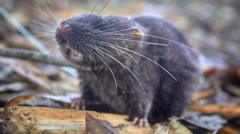A recent expedition to the Alto Mayo region in Peru has resulted in the remarkable discovery of 27 new species, including an unusual amphibious mouse with webbed feet and a unique blob-headed fish. Conducted by scientists from Conservation International alongside local indigenous groups, the expedition underlined the biodiversity present in this protected area, which encompasses parts of the Amazon rainforest. According to Conservation International, it is possible that an additional 48 species may have been identified, pending further research.
Trond Larsen, a senior director at Conservation International, expressed excitement over the number of new mammals and vertebrates found considering the anthropogenic pressures faced in this densely populated area due to deforestation and agricultural development. The Alto Mayo region is not only vital for biodiversity but also serves Indigenous territories deeply linked to the land. Yulisa Tuwi, an Awajún woman who participated in the research, reflected on the significance of these findings for her community, stating that they enhance their ability to safeguard culture and natural resources while understanding the local ecosystems.
In addition to the remarkable discoveries, the expedition also documented a new species of dwarf squirrel, various fish species, amphibians, and butterflies. Among the fascinating aquatic distinctions was a fish dubbed the blob-headed bristlemouth catfish, prized by the Awajún, who were already familiar with it prior to scientific recognition.
Furthermore, researchers found a new dwarf squirrel species measuring just 14 cm—approximately half that of a typical grey squirrel—characterized by its distinctive, agile movements and beautiful chestnut-brown color. The exploration also unearthed a unique spiny mouse species with stiff guard hairs that resemble those of a hedgehog.
This new amphibious mouse, part of a rare category known for its semi-aquatic habits, feeds on aquatic insects and represents one of the world’s rarest rodents—a testament to the rich biodiversity of the Alto Mayo region.



















